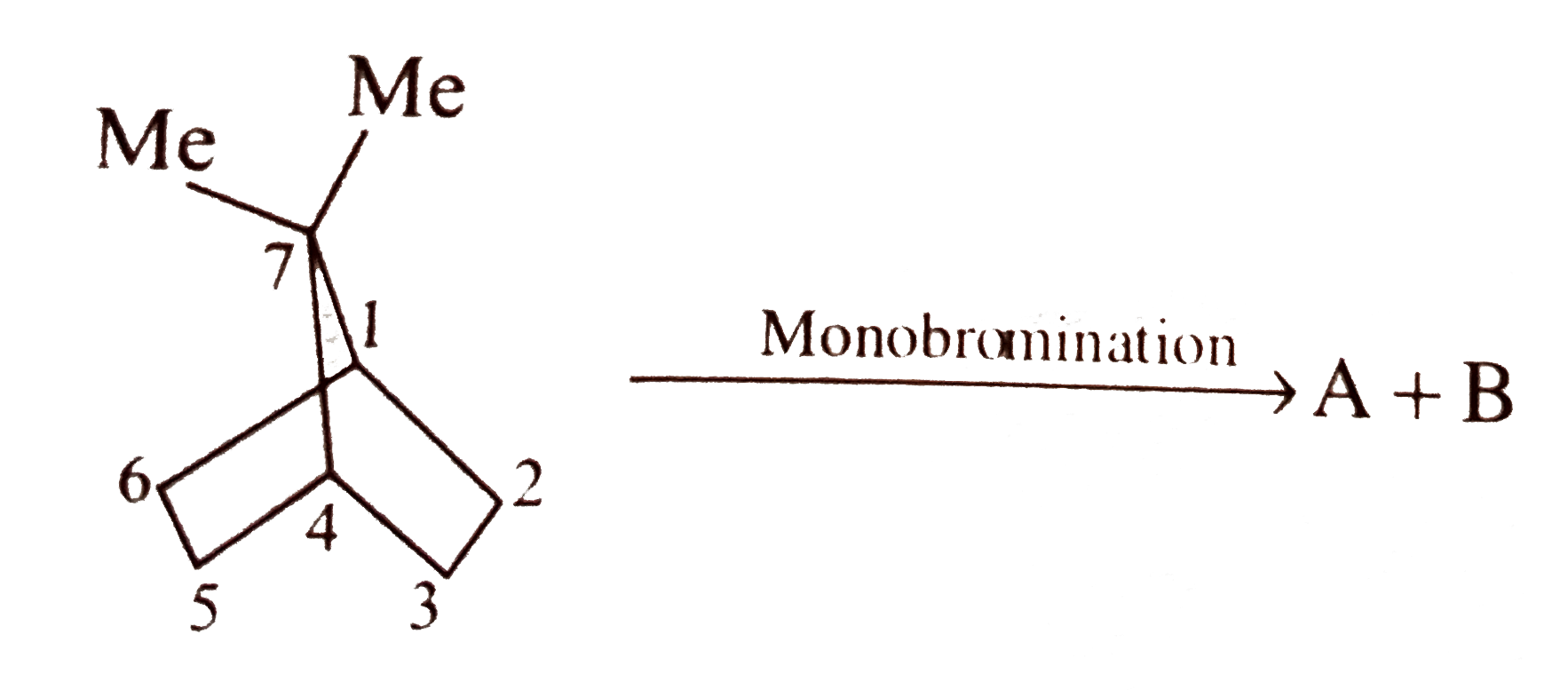Complete the following reactions :
To complete the reactions as described in the video transcript, we can follow these steps:
1. Identify the Reactants:
Let's denote the starting compound as A. It is likely an alkene or an alcohol, as we are discussing reactions involving H+ addition.
2. Protonation of the Alkene:
When H+ is added to the alkene, it will follow Markovnikov's rule. This means that the hydrogen atom will attach to the carbon atom with the greater number of hydrogen atoms already attached (the more substituted carbon).
- Reaction: A + H+ → CH3-CH(OH)-C2H5 (assuming A is an alkene like propene).
3. Formation of a Carbocation:
After the protonation, a carbocation is formed. The stability of the carbocation can be enhanced by hyperconjugation. If the carbocation is formed at a secondary carbon, it will be more stable than a primary one.
- Intermediate: CH3-CH(OH)-C2H5 (where the OH group is attached to the more substituted carbon).
4. Elimination of a Proton:
The next step involves the elimination of a proton (H+) from the alcohol group. This leads to the formation of a double bond (alkene) through dehydration.
- Reaction: CH3-CH(OH)-C2H5 → CH2=CH-C2H5 + H2O.
5. Final Product:
The final product (P) is an alkene, specifically butene (C4H8), which can be represented as CH2=CH-CH2-CH3.
Final Product:
- The final product P is CH2=CH-CH2-CH3.
Let's denote the starting compound as A. It is likely an alkene or an alcohol, as we are discussing reactions involving H+ addition.
When H+ is added to the alkene, it will follow Markovnikov's rule. This means that the hydrogen atom will attach to the carbon atom with the greater number of hydrogen atoms already attached (the more substituted carbon).
After the protonation, a carbocation is formed. The stability of the carbocation can be enhanced by hyperconjugation. If the carbocation is formed at a secondary carbon, it will be more stable than a primary one.
The next step involves the elimination of a proton (H+) from the alcohol group. This leads to the formation of a double bond (alkene) through dehydration.
The final product (P) is an alkene, specifically butene (C4H8), which can be represented as CH2=CH-CH2-CH3.
- The final product P is CH2=CH-CH2-CH3.
Topper's Solved these Questions
- BOOK - CENGAGE CHEMISTRY ENGLISHCHAPTER - ALCOHOL,PHENOL AND ETHERSEXERCISE - Exercises Subjective25videos
ALCOHOL,PHENOL AND ETHERS
- BOOK - CENGAGE CHEMISTRY ENGLISHCHAPTER - ALCOHOL,PHENOL AND ETHERSEXERCISE - Exercises Concept Application33videos
ALCOHOL,PHENOL AND ETHERS
- BOOK - CENGAGE CHEMISTRY ENGLISHCHAPTER - ALCOHOL,PHENOL AND ETHERSEXERCISE - Archives Analytical And Descriptive15videos
ALCOHOL,PHENOL AND ETHERS
- BOOK - CENGAGE CHEMISTRY ENGLISHCHAPTER - ALIPHATIC AND AROMATIC ALDEHYDES AND KETONESEXERCISE - Archives Subjective26videos
ALIPHATIC AND AROMATIC ALDEHYDES AND KETONES
Similar Questions
Complete the following reaction :

Also write the mechanism of the reaction.View SolutionComplete the following reaction : i.

ii.
iii.
iv. View Solution
View SolutionComplete the following reaction :
CH3CHOLiAlH4−−−→View SolutionComplete the following reaction :
CH3CH2CHOOH−−−→View SolutionComplete the following reaction:
i.
ii. View Solution
View SolutionComplete the following reaction:

What is the product (C) and (D)?View SolutionComplete the following reaction ,
HBr+H2SO4→View SolutionComplete the following reaction ,
P+H2SO4→View SolutionComplete the following reaction ,
KHCO3+H2SO4→View SolutionComplete the following reaction ,
FeO+H2SO4→View Solution

